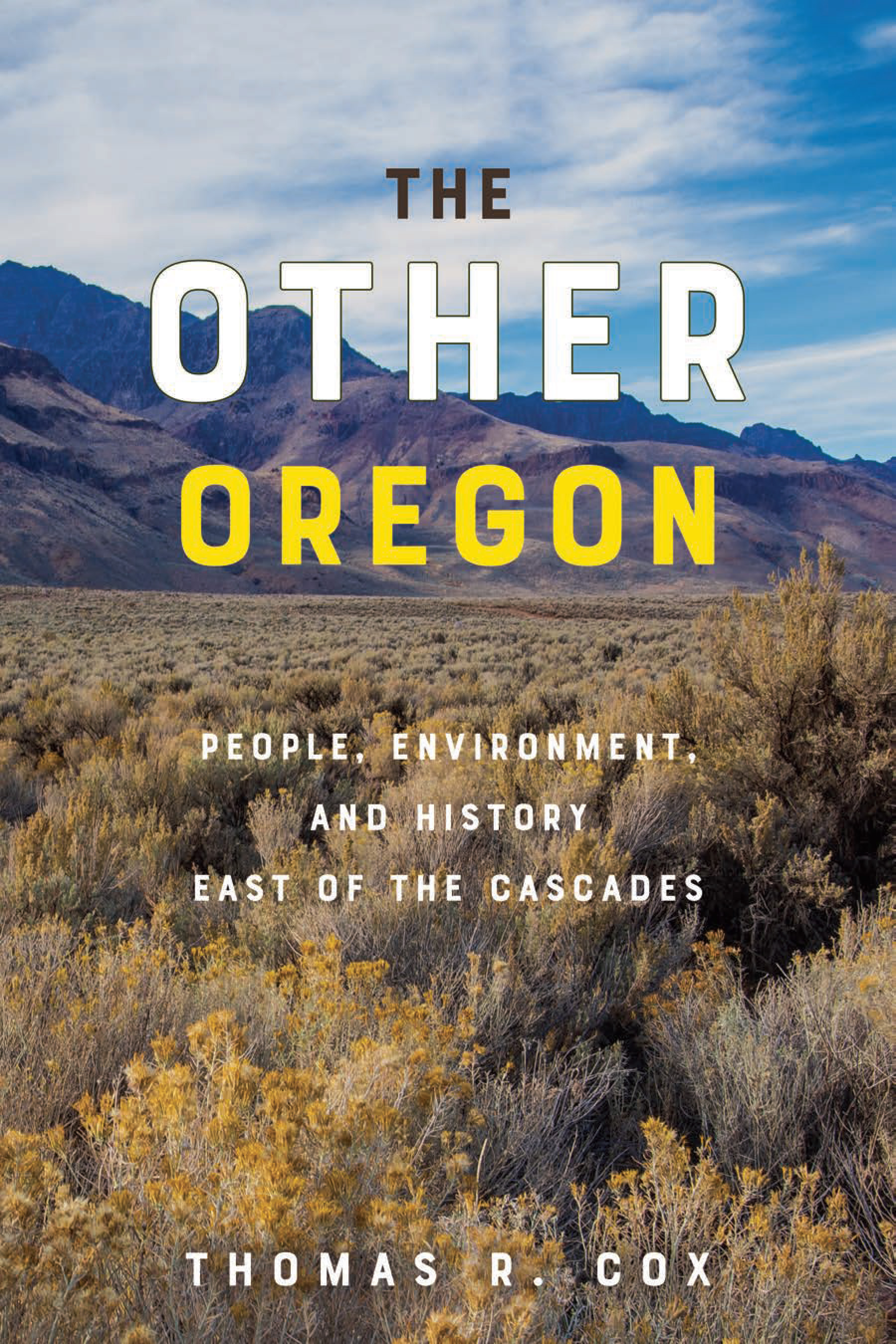 In The Other Oregon, Thomas R. Cox explores the complexities of Oregon east of the Cascades with a thorough, multidisciplinary eye. He focuses on the interactions between environmental history, cultural and physical geography, natural resource management, and the people of the region. Here, an excerpt from his preface reveals a bit more about his background and approach.
In The Other Oregon, Thomas R. Cox explores the complexities of Oregon east of the Cascades with a thorough, multidisciplinary eye. He focuses on the interactions between environmental history, cultural and physical geography, natural resource management, and the people of the region. Here, an excerpt from his preface reveals a bit more about his background and approach.
Growing up in Redmond in the 1940s and 1950s, my friends and I used to bewail the inattention to our section by the state’s politicians and the metropolitan press. Eastern Oregon ought to be a separate state, we argued. And when I arrived at Oregon State as an undergraduate, I was both surprised and pleased to learn that classmates from Ontario, on Oregon’s eastern border, had engaged in the same discussions. Meanwhile, various and sundry fraternity brothers chided me for being from the “great desert,” to which I responded that I would rather bask in the sun like a lizard than be a “moss-back” from “the great swamp.” The stereotypes on which these exchanges were based, like most such, were oversimplifications. Vast stretches east of the Cascades—south from Bend, between Klamath Falls and Lakeview, and in the Blue and Wallowa Mountains—are forested, and north of the Blues mile after mile of onetime bunchgrass steppe now sport highly productive wheat ranches. Nor is the Westside a vast swamp; major portions of the Willamette, Rogue, and Umpqua Valleys receive so little rain they have never been forested in modern times. Yet, all in all, west of the Cascades is a well-watered land, while relative aridity dominates east of the range.
Thus stereotypes persist, and they are not limited to the fantasies of teenagers or rivalries of undergraduates. An old prospector, scouring the sun-drenched Pueblo Mountains in far southeastern Oregon, long ago commented on Western Oregon and its people: “Too many trees,” he opined, “It gives them a narrow vision, and they can’t see out.”
One can accept that the prospector had touched on a basic truth without falling into the maw of environmental determinism. As nineteenth-century historian Theodor Mommsen reputedly said, “Don’t speak to me of environmental determinism. Where once lived the ancient Greeks now live the Otooman Turks!” The relatively dry, challenging environment east of the Cascades presented opportunities quite different from those of the Willamette Valley; this harsh land drew people of a different sort, people who brought with them values and attitudes that shaped the economy, society, and outlook of the area and thus laid the foundation for the east-west divisions that, in spite of an ongoing influx of outsiders, have continued to the present day. The region’s identity remains shaped by the land and the ways that people have survived—and even prospered—on it. And for those who have not prospered, a certain pride remains in simply having persevered in this challenging place.
More lies behind these differences than relative levels of precipitation: the contrasts are cultural as well as environmental. Some years ago Dorothy Johansen, in her presidential address to the Pacific Coast Branch of the American Historical Association, sought to explain the palpable differences between Oregon, Washington, and California—although her “Oregon,” like that of my daughter’s roommate, clearly lay west of the Cascades, particularly in Portland and the Willamette Valley. Echoing Louis Hartz’s fragment thesis, she argued that original settlers set the tone for each of the three states and thus shaped their societies in the years that followed. In his bicentennial history of the state, Gordon Dodds took much the same position—as did I some years ago in trying to delineate the sociopolitical differences among Oregon, Washington, and Idaho through a study of the state parks movement in each. All of us reflected the earlier argument of Earl Pomeroy, that settlers of the American West brought with them cultural baggage that shaped what they did and what they built. Experience in its varied forms reinforced the mix.
Excerpt from The Other Oregon: People, Environment, and History East of the Cascades by Thomas R. Cox, copyright © 2019.
